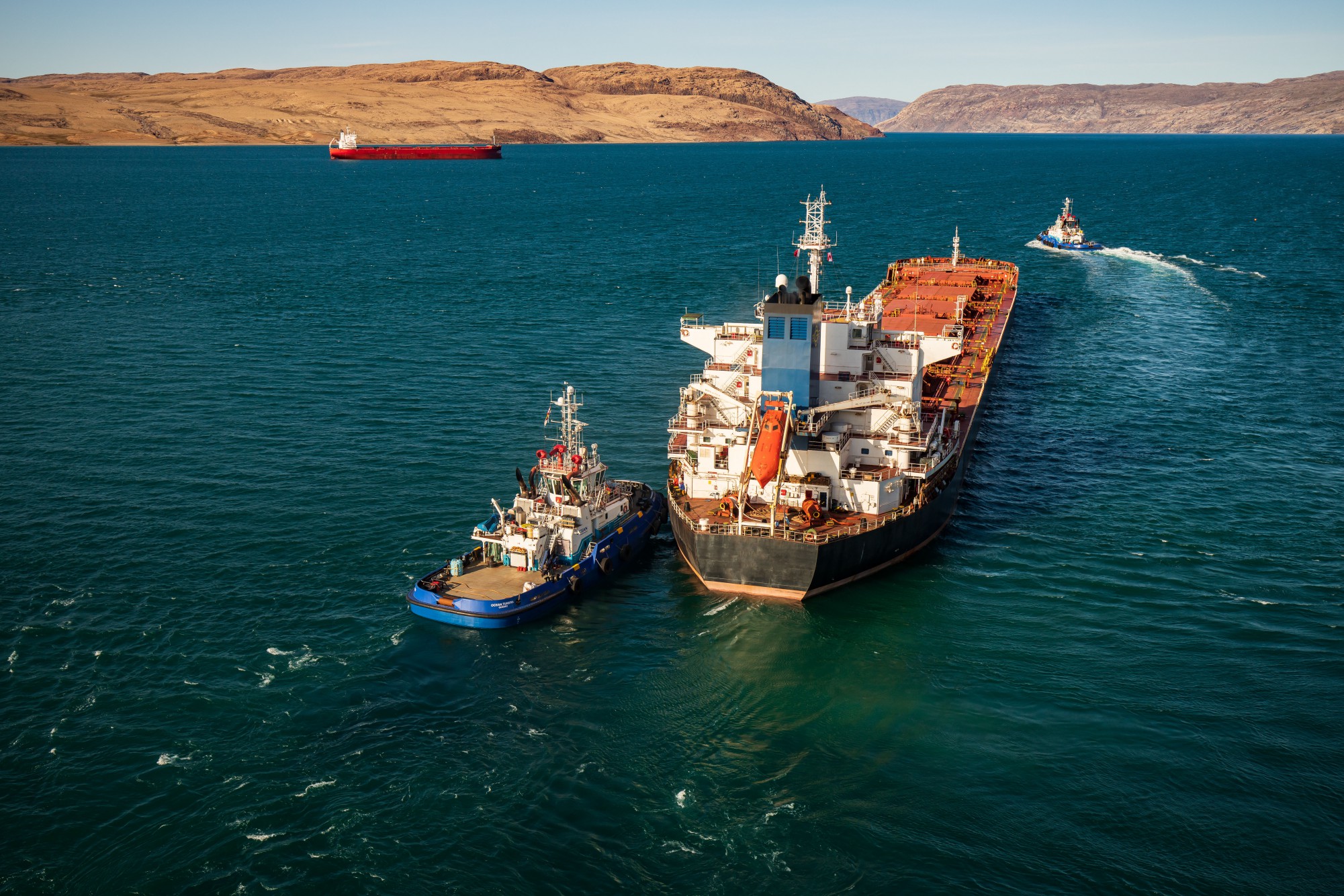A Nunavut mine is considering an anchorage off Greenland
Denmark, on behalf of Greenland, had already asked for a say in environmental assessments of Baffinland's Mary River project.

The Government of Denmark wants a say in the environmental assessment of the Mary River mine on north Baffin Island and its case for consultation is growing.
The shipping route proposed by Baffinland Iron Mines Corp., under the second phase of development of Mary River, “interacts with waters off the western coast of Greenland to a greater extent than we’d previously characterized,” wrote Ryan Barry, executive director of the Nunavut Impact Review Board, in an April 23 email to Yordanka Stoimenova, a policy analyst with the Impact Assessment Agency of Canada.
The email, along with various sets of correspondence among the federal agency, the review board and representatives from the Kingdom of Denmark, which are accessible on the review board’s registry, outline Greenland’s position that it should be among the groups consulted on the expansion of the iron ore mine and the associated increase in shipping.
[Greenland wants a say in Baffinland’s expansion plans]
In this latest email, Barry outlines that as of October 2018, Baffinland had considered an anchorage in Greenland but had decided not to pursue this option any further as it was tied to their withdrawn proposal of an extended shipping season.
In a May 2019 document submitted to the review board by Baffinland, The Vessel Traffic and Anchorage Study, there is no mention of an anchorage in Greenland, only options for anchorages near the mine’s Milne Inlet port.
Barry points out in the email that a few days later, Baffinland submitted its Icebreaking Assessment Report, which resurrects the option of an anchorage in Greenland.
Here, Baffinland explains that during the shoulder season, when drifting ice is a concern in Baffin Bay, ore carriers will wait at a Greenland anchorage for approval to continue on to Milne Inlet through Eclipse Sound.
This would avoid congestion of carriers at the port and within Milne Inlet, and it would offer a safe anchorage until ice conditions are clear enough for the transit, according to Baffinland.
In the company’s phase-two project description, submitted in January of this year, there is again no mention of an anchorage in Greenland as part of the current plan, and the document clearly states that there will be no changes to the current shipping route or anchorage locations.
“This led the NIRB to understand that shipping off the western coast of Greenland was no longer under consideration,” Barry said.
However, he added that Baffinland clarified its position in a recent email exchange, saying the anchorage in Greenland mentioned in the Icebreaking Assessment from May 2019 was still being actively considered.
“Specifically, we now understand that Baffinland is requesting that at season’s beginning that project vessels hold around the Hellefiske Bank area, which is in Greenland waters, as this area is generally ice free at that time while upper reaches of Baffin Bay may still have ice,” Barry said.
The ships would hold here until the port captain advises them to proceed to a project anchorage, when schedules and conditions permit, Barry explained to Nunatsiaq News.
Barry said in the email that Baffinland has indicated that any necessary arrangements with Greenland government officials for vessels using this anchorage would be the responsibility of the contracted vessel operator, not Baffinland.
The particular anchorage Baffinland proposes to use is outside the 12 nautical miles that make up Greenland’s territorial waters, within which it has the greatest control over passage.
Nonetheless, the anchorage is still within the 200-nautical-mile limit of Greenland’s exclusive economic zone.
Denmark initially reached out to the federal Impact Assessment Agency of Canada, expressing interest in participating in the environmental assessment of Mary River’s phase-two plans on Feb. 11, on behalf of Greenland’s directorate of the environment.
Denmark’s position is that marine wildlife in both Canadian and Greenlandic waters will be affected by the project’s increased shipping plans.
As part of its second phase of development, Baffinland is seeking a cap of 176 voyages per year by ship, each of which includes a transit to and from the Milne Inlet port, across Baffin Bay.
This is more than twice the number of transits made in the 2018 shipping season.
An initial response from the review board outlined updates to Baffinland’s plan that would assuage some of Greenland’s concerns, such as the company’s withdrawal of plans to extend the shipping season each year, which would have required significant icebreaking.
As well, the review board noted that Baffinland indicated it would not be changing its current shipping route.
Nonetheless, an April 24 email from Denmark’s Ministry of Environment and Food to the review board states that Greenland would still like to participate in the assessment, despite these clarifications.
“Greenland states that as the project has evolved a lot over time and can do so in the future, they as a consultation party, would like to have the opportunity to continuously assess when there is a need to comment on possible impacts of shared wildlife between Canada and Greenland,” the letter states.
This letter was likely written before the review board’s April 23 correspondence was available and does not reference the additional information provided by the board on impacts within Greenland’s waters.